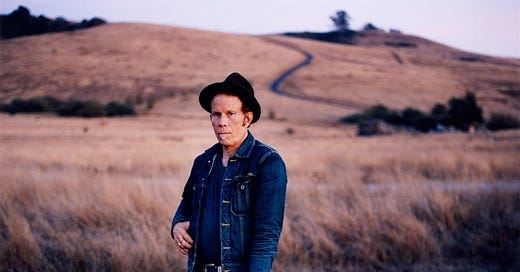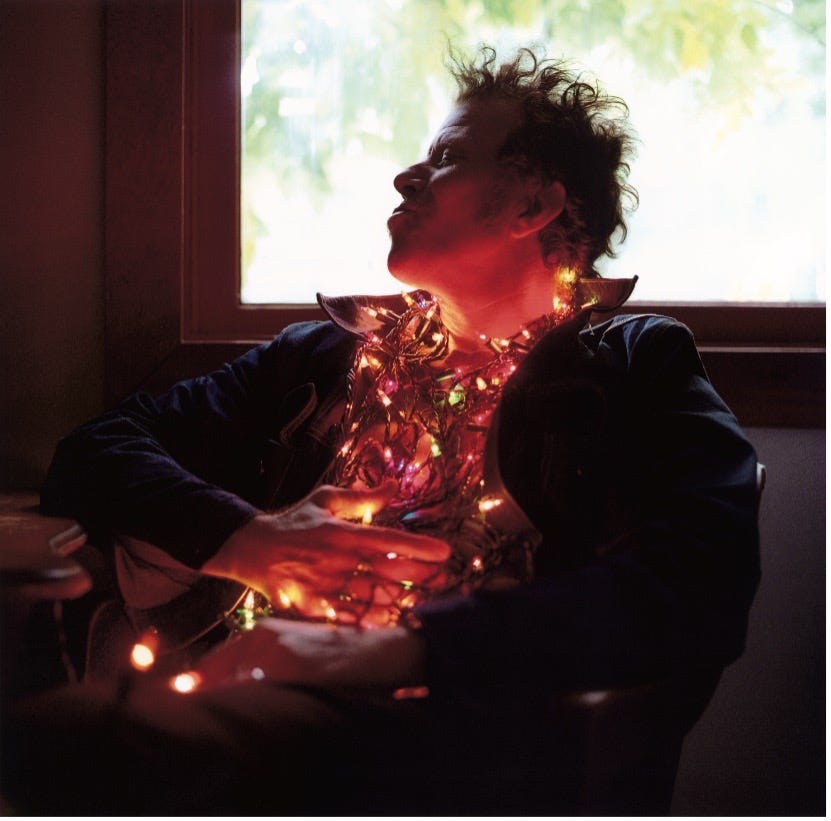Where do I begin with...Tom Waits?
In our new weekly feature, we reveal the best – and worst – places to start with the vast discographies of some of our favourite artists. This week: musician and producer Árni Hjörvar on Tom Waits.
Back in the early 2000s, I had the chance to join a pan-European community art project centred around a public park in Antwerpen called Muntplein - now known as Munthof. I know this because I’m currently sat in it writing this.
I was seventeen and by far the youngest participant. The Icelanders travelling with me were painfully cool, and as an insatiably impressionable teenager, I absorbed it all like second-hand smoke. I was hopeless.
Coolest of the bunch was Bóas Hallgrímsson. He was 20-ish at the time (cool), had just backpacked across Europe (cooler) and was the frontman for the hardest band in town: the gloriously teenage-angsty Vígspá, which translates as “Murder Prophecy” (COOLEST). Bóas was all the cool things and I was obsessed.
At some point during our stay, he showed up with the then recently released album Blood Money by Tom Waits. As he played it for me, I wasn’t sure if he was hazing me. To my ears, it was just incoherent garbage and I couldn’t for the life of me understand why he liked it. However, I stubbornly persisted as I desperately wanted to be like him and slowly but surely it grew on me. Before long, I’d become a full blown Tom Waits freak. Admittedly, Bóas could have shown up with The Smurfs Go Pop and I would have treated it like scripture.
So, if you're seventeen and looking for a hero to attach yourself to, pick someone weird.
Here’s to Bóas, Tom Waits and all the world’s impressionable teenagers.
The entry point: Rain Dogs (1985)
Though I first came in contact with Tom Waits via Blood Money I wouldn’t recommend that as an entry point – it’s a lot. Instead I’d wind back a bit and start with Rain Dogs - Waits’ first album to involve his wife and collaborator Kathleen Brennan as a co-writer, something she’s been credited with on all subsequent albums.
Though I first came in contact with Waits via Blood Money I wouldn’t recommend that as an entry point. It’s a lot. Instead I’d wind back a bit and start with 1985’s Rain Dogs - Waits’ first album to credit Kathleen Brennan as a co-writer, something she’s been credited as on all subsequent albums.
Waits had started out in the 70s as a pretty cut and paste late night LA crooner. A slightly odd vaudevillian character that mostly played 12-bar blues tunes and sang about drinking. But it wasn’t until he met his future wife and muse Kathleen Brennan that he truly came into his own. Their partnership began around 1983’s Swordfishtrombones - by some measures his masterpiece - but it was on the next record Rain Dogs where Waits truly embraced this off-kilter and theatrical Captain Hook persona that’s defined him ever since.
Rain Dogs is full of all the hallmarks of a great Tom Waits record: deranged sea shanties, skeletal percussion, graveyard growls and some truly mind-bending guitar work by avant-garde legend Marc Ribot - his first of countless collaborations with Tom Waits.
The high point: Mule Variations (1999)
Honestly, any of Waits’ 90s albums could be considered his high point. The decade began with Bone Machine (1992), on which he fully abandons traditional songwriting structures. The came The Black Rider (1993) a theatrical collaboration with beat writer William Burroughs and director Robert Wilson that basically broke theatre. The decade closed with Mule Variations (1999) on which Waits bins the recording rulebook. By the end of the 90s, he’d given every single musical convention the finger and picked up a couple of Grammys for his troubles.
Of those records, Mule Variations is the album that most frequently comes on at my house, and by that measure alone, it’s his peak. It includes “The House Where Nobody Lives” - one of the most heart-wrenching songs ever recorded; “Filipino Box Spring Hog” - an honest attempt by a 50-something white man to make hip hop; a madly eerie poem called “What’s He Building in There”; and “Chocolate Jesus”, which features an actual rooster solo. It’s a trip!
The low point: The Heart of Saturday Night (1974)
I’m no fan of Waits’s early albums. As mentioned earlier, he didn’t really find his voice until he met his life-partner Brennan and before that, he was mostly doing a kind of LA Noir Philip Marlowe schtick. His first album Closing Time pays homage to Bob Dylan without managing the lyrical depth of his peer but as it features the classic “Ol’ 55” it can’t be considered his worst. That title has to go to his second album The Heart of a Saturday Night. Inoffensive enough to have served as a soundtrack to countless awkward cocktail parties, but personally, I want my Tom Waits to be offensive!
Árni Hjörvar is a musician, producer and journalist






His early stuff is certainly in the tradition of American songwriting, but it’s an evolution of that style, not a pastiche, imho. Ol’ 55, Tom Traubert’s Blues, Burma Shave, Grapefruit Moon, Kentucky Avenue, The Ghosts of Saturday Night are all close to magnificent. There used to be a fabulous compilation of the best of the early albums called Asylum Years which I bought very shortly after Swordfishtrombones. Those albums were my ‘way in’!
This is such a fun weekly feature idea - so excited for future publications!